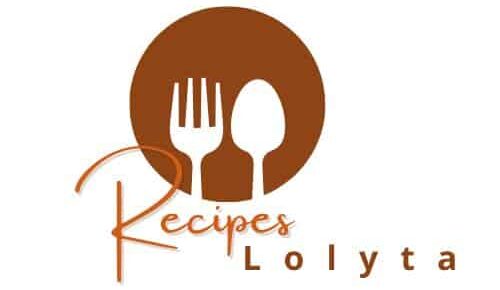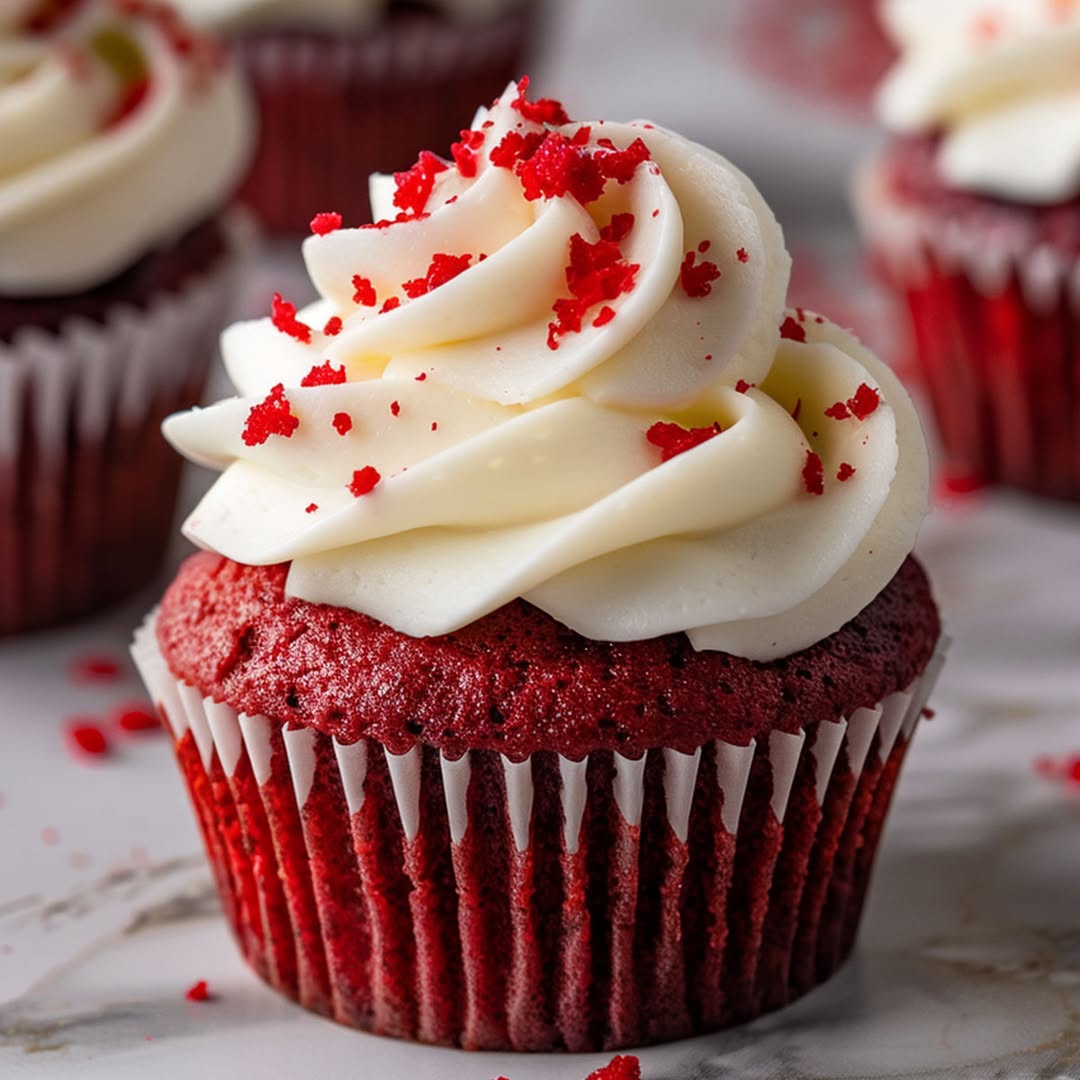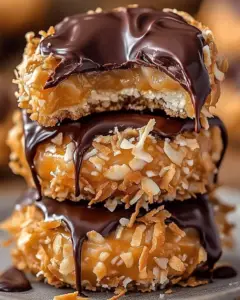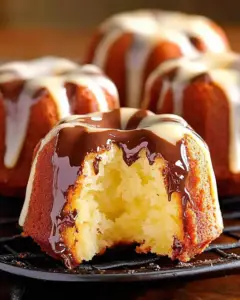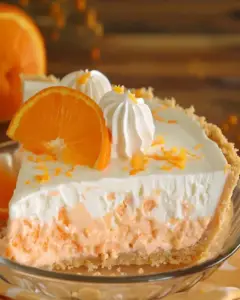Ultimate Red Velvet Cupcakes: A Deliciously Fluffy Treat
Red velvet cupcakes are the epitome of indulgence, combining the perfect balance of cocoa and vanilla flavors with a hint of tanginess from the buttermilk. Their vibrant red hue makes them a stunning addition to any dessert table. These cupcakes are a blend of flavors and textures that sensorially delight, making each bite a memorable experience.
The rich, fluffy red velvet cupcakes not only captivate with their taste but also with their luxurious texture. The smooth cream cheese frosting provides the perfect contrast, adding a creamy finish to the tender crumb. Whether you’re a seasoned baker or a home cooking enthusiast, this red velvet cupcake recipe is achievable and rewarding.
These cupcakes are ideal for any occasion, from a casual afternoon tea to a festive celebration. The original southern recipe has been adapted over time to suit a variety of baking styles and preferences, maintaining its elegance and charm. Embrace the joy of baking by creating your own batch of these delightful cupcakes that are as visually appealing as they are delicious.
Quick Recipe Highlights
- Flavor Profile: A perfect blend of cocoa with vanilla undertones, highlighted by a subtle tang from the buttermilk.
- Texture: The cupcakes have a light yet moist crumb that melts in your mouth, complemented by the silky cream cheese frosting.
- Aroma: These cupcakes waft a pleasing aroma of chocolate and vanilla, with hints of cream cheese as they bake.
- Visual Appeal: Striking red color contrasted by the white frosting, making them irresistible to the eyes.
- Skill Level Needed: Basic baking skills are sufficient; no advanced techniques are required.
- Special Equipment: Standard kitchen equipment such as a mixer, cupcake tin, and oven are necessary.
Recipe Overview
- Difficulty Level: While straightforward, ensuring the perfect red color and consistent texture requires attention to detail.
- Category: Dessert; perfect for anyone with a sweet tooth looking to enjoy a classic southern treat.
- Cuisine: Originating from the American South, red velvet is a staple in American confectionery traditions.
- Cost: Red velvet cupcakes are affordable; most ingredients are pantry staples, with food coloring being the special add-on.
- Season: Best enjoyed year-round, although particularly popular during festive seasons for their striking color.
- Occasion: Suitable for birthdays, weddings, and holidays, or simply when you want to impress with something homemade.
Why You’ll Love This Recipe
The taste and texture of these red velvet cupcakes will win you over instantly. They strike the ideal balance between sweet and tangy, with a velvety crumb that is perfectly complemented by the cream cheese frosting’s richness. These cupcakes are a taste sensation, inviting you to savor every bite.
Convenience is another reason to love this recipe. With only a few minutes of hands-on time and simple ingredients, you can prepare and bake these cupcakes effortlessly. It’s a great way to practice baking skills without requiring advanced techniques or tools.
Nutritionally, these cupcakes are a treat that can be part of a balanced diet when enjoyed in moderation. The use of buttermilk and cocoa powder adds subtle health benefits, offering a touch of protein and antioxidants.
These cupcakes are perfect for social gatherings and entertaining. Their bright color and delightful appearance make them an eye-catching centerpiece that guests will love. Share the joy with friends and family over a delicious cup of coffee or tea.
Cost-effectiveness is another appealing factor. Red velvet cupcakes make for an economical dessert choice. They are made with simple ingredients, allowing you to enjoy gourmet goodness without breaking the bank.
Historical Background and Cultural Significance
Red velvet cake originated in the early 20th century, with its roots in the American South. Its origin story is intertwined with the vibrant and flavorful cuisine of the region, bringing color and life to dessert tables across America.
Over the decades, red velvet products have gained significant cultural importance. Once a ritzy and novel treat, they eventually became an iconic part of American dessert culture, loved for their visual appeal and flavor.
The evolution of the red velvet recipe reflects changing culinary trends. Initially, it relied on beets for its coloring, but modern variations typically use food dyes, enhancing its visual allure further.
Today, regional variations abound, with each baker imparting their unique twist. Despite these differences, the essence of red velvet remains the same, embodying joy and indulgence across kitchens everywhere.
Ingredient Deep Dive
The star of red velvet cupcakes is cocoa powder, which gives the cupcakes their mild chocolatey depth. Historically, cocoa was a luxury, but now it’s a baking staple. It provides not only flavor but also antioxidants, while its smooth, rich quality complements other ingredients well.
Another crucial ingredient is cream cheese, used in the frosting. Its origins date back to the Americas where it’s prized for its creamy texture and versatility. It offers calcium and adds a signature tangy creaminess that enhances the overall cupcakes.
Red food coloring adds the quintessential vibrant hue. When choosing a coloring, opt for brands offering natural, plant-based dyes, which are safer and have less impact on health. Store them in a cool, dry place to maintain their potency, and consider using substitutes like beet juice for a healthier alternative.
Buttermilk plays a key role, providing moisture and tenderness. It can be substituted with a mixture of milk and lemon or vinegar if needed. Nutritionally, it’s lower in fat than regular milk but offers a wealth of probiotics.
Common Mistakes to Avoid
- Overmixing the batter can make the cupcakes dense. Mix just until combined for a tender crumb.
- Using too much food coloring might give an off-putting taste. Follow the recommended amount or opt for natural alternatives.
- Improper butter temperature affects texture. Ensure your butter is at room temperature for the perfect mix.
- The wrong type of cocoa powder can alter taste. Use natural cocoa for authentic flavor.
- Undercooking or overcooking cupcakes affects texture. Always perform a toothpick test to check doneness.
- Forgetting to sift dry ingredients could lead to lumps. Sifting ensures even distribution and a smoother batter.
- Skipping the buttermilk could result in dryness. Its acidity is crucial for the red color and tender texture.
- Not cooling cupcakes properly before frosting causes melting. Allow them to cool completely to prevent this issue.
Essential Techniques
Beating butter and sugar until light and fluffy is crucial for cupcake texture. This process aerates the mixture, aiding in rising and achieving a delicate crumb.
Proper folding of dry ingredients helps maintain the batter’s lightness. Fold gently to avoid deflating the mix, using a rubber spatula to incorporate from bottom to top.
Knowing when to stop mixing is another important technique. Overmixing can develop gluten, leading to tougher cupcakes. Mix just until ingredients are combined and no dry streaks are visible.
The right cream cheese frosting texture is vital. Beat until smooth and creamy, but avoid overwhipping to prevent a runny consistency.
Pro Tips for Perfect Red Velvet Cupcakes
For optimal red color, use gel food coloring which is more concentrated and won’t alter the batter consistency.
To add depth to the flavor, a touch of espresso powder can enhance the cocoa notes without overpowering.
Always preheat the oven and ensure consistent temperature for even baking results.
For moist cupcakes, avoid overfilling the cupcake liners. Keep the fill level to two-thirds to allow room for rising.
Ensure cream cheese is at room temperature before preparing the frosting to achieve a smooth, lump-free texture.
When piping the frosting, use a large star tip for a professional and visually appealing finish.
Variations and Adaptations
Regional variations include the addition of pecans in southern versions that add crunch and a contrasting texture.
Seasonal adaptions might include a hint of spice like cinnamon for fall or peppermint for winter, creating distinctive themed versions.
Dietary modifications such as gluten-free options can be achieved by using gluten-free flour blends, without sacrificing flavor or texture.
Flavor variations can be introduced by incorporating ingredients like almond or orange extracts, adding new dimensions to the classic red velvet taste.
For a denser, denser crumb, consider using sour cream in place of some of the buttermilk, ensuring a moister end result.
Presentation alternatives include mini cupcakes, which are ideal for parties and easier portion control, while retaining their charm.
Serving and Presentation Guide
Plating techniques for red velvet cupcakes can involve using tiered stands, which showcase their elegance and invite indulgence.
Garnishing ideas might include a sprinkle of cocoa powder or edible gold leaf for a festive or elegant finish.
Traditional accompaniments such as a glass of cold milk or a scoop of vanilla ice cream enhance the indulgent experience.
Modern serving suggestions incorporate pairing with a cappuccino or flavored tea, adding sophistication to your presentation.
Temperature considerations suggest serving these at room temperature for the best flavor and texture.
Portion control tips involve slicing cupcakes in half for those who want a smaller portion, or offering mini versions for sampling.
Wine and Beverage Pairing
For wine pairings, a smooth red like Pinot Noir complements the cupcakes’ flavors with its fruit-forward profile.
Non-alcoholic alternatives include sparkling water with a splash of berry-flavored cider for a refreshing and balanced accompaniment.
Coffee or tea pairings, such as a robust dark roast coffee or a floral Earl Grey, bring out the depth of cocoa in the cupcakes.
Temperature considerations are important for beverages. Consider chilling white wines slightly more, while reds are better at room temperature.
Serving suggestions involve pairing each cupcake with its own small beverage so guests can enjoy a dedicated indulgence.
Storage and Shelf Life
Store red velvet cupcakes in an airtight container at room temperature for up to two days to maintain freshness.
For extended storage, refrigerate them, ensuring cupcakes are well-covered to prevent the frosting from absorbing fridge odors.
Place in suitable containers to avoid crushing the frosting, and separate layers with parchment paper if stacking.
Be alert to signs of spoilage like off-smells or visible mold, especially when stored for more than a couple of days.
Reheat cupcakes briefly, if needed, in the microwave at short intervals, being careful not to heat the frosting.
For freezing, wrap cupcakes individually in plastic wrap before placing in a freezer bag, removing air to prevent freezer burn.
Make Ahead Strategies
Prepare the cupcakes a day in advance, storing them in an airtight container to preserve freshness and save time the day of serving.
Storage between steps involves keeping unfrosted cupcakes and frosting separate, combining them just before the event.
Assess quality impact by tasting a test cupcake; if it’s dry, consider adding a touch more oil next time to retain moisture.
Reheating guidelines, if needed, include microwaving unfrosted cupcakes for ten seconds before frosting, reviving their freshly-baked feel.
Add fresh elements such as a decorative frosting swirl or a dusting of cocoa powder right before serving to elevate presentation.
Scaling Instructions
When halving the recipe, consider that baking times may need minor adjustments since smaller amounts cook faster.
Doubling or tripling the recipe requires attention to mixing times—doubling the batter can affect texture if overmixed.
Adjust equipment by using larger mixing bowls and multiple cupcake pans, ensuring batches bake evenly.
Modify timing by rotating pans halfway through baking to prevent uneven cooking, ensuring consistent results.
Storage considerations should include additional airtight containers or trays to accommodate larger quantities.
Nutritional Deep Dive
The macro breakdown of red velvet cupcakes can vary, but generally includes carbohydrates as the main component, followed by fats and proteins from frosting.
Micronutrient analysis highlights the presence of calcium, iron from cocoa powder, and vitamins from any added extracts.
Health benefits may include mood-boosting chocolate properties and potential probiotic support from buttermilk.
Dietary considerations suggest moderation due to sugar and fat content, making these an occasional treat.
Portion analysis helps manage consumption, with one cupcake typically serving as a single portion.
Weight management tips include dividing cupcakes into mini portions, reducing calorie intake while enjoying the dessert.
Dietary Adaptations
For a gluten-free version, substitute traditional all-purpose flour with a gluten-free baking blend, maintaining the original flavor profile.
Dairy-free adaptations involve using plant-based milk alternatives and dairy-free cream cheese, retaining creaminess in the frosting.
To make vegan red velvet cupcakes, replace eggs with flaxseed meal or similar alternatives, while using vegan butter and milk substitutes.
Low-carb adaptations utilize almond flour in place of wheat flour, adjusting recipes for texture and taste consistency.
Keto modifications can be made by using alternative sweeteners like erythritol instead of sugar, combined with almond flour for a lower carb count.
Paleo options also employ almond flour and natural sweeteners, ensuring ingredients align with dietary restrictions.
Low-FODMAP recipes require lactose-free buttermilk substitutes and attention to cocoa powder amounts to avoid discomfort.
Troubleshooting Guide
For texture issues, ensure accurate ingredient measurements and correct oven temperature. This prevents dense or dry cupcakes.
Balancing flavors involves proper measurement of cocoa and vinegar, giving the desired tang without overwhelming sweetness.
Temperature problems often arise from oven fluctuations; using an oven thermometer ensures consistent results.
Equipment challenges typically come from non-standard-sized cupcake pans; adjusting fill levels helps standardize rise and bake.
Substitutions, such as non-standard buttermilk or flour alternatives, can affect consistency and flavor.
Timing concerns, particularly overbaking, are minimized by vigilant checking around suggested bake time, and using the toothpick test.
Recipe Success Stories
Community feedback often highlights the easy-to-follow nature of the recipe, with newcomers appreciating successful first attempts.
Variation successes shared by readers include the addition of crushed nuts or chocolate chips for an extra treat.
Adaptation stories reflect creative ideas, such as using beet juice for coloring, enhancing both aesthetics and nutrition.
Reader suggestions typically feature on adjustments like reduced sugar or added spices to suit individual preferences.
Photography tips show that natural lighting and garnishes like mint leaves can elevate the presentation of cupcakes.
Frequently Asked Questions
A: Yes, using beet juice or powder can naturally color your cupcakes, offering a red hue without synthetic dyes while adding a slight earthy note.
Q: How do I ensure a moist cupcake?
A: Moisture is maintained by not overbaking and properly measuring ingredients, especially the buttermilk and oil, which contribute to a tender crumb.
Q: Why did my cupcakes not rise?
A: Insufficient rising can result from expired leavening agents. Always check the freshness of baking soda and powder before use.
Q: Can I use vinegar substitutes?
A: Lemon juice or buttermilk can substitute for vinegar in activating the baking soda and controlling the cupcake’s rise and color.
Q: Is cream cheese frosting necessary?
A: While traditional, you can use buttercream or whipped cream alternatives, keeping in mind they alter the classic flavor profile.
Q: How do I achieve a vivid red shade naturally?
A: Optimal natural color can be achieved by using concentrated beet juice, which intensifies the hue, especially in combination with cocoa.
Q: Are eggs essential?
A: For those avoiding eggs, flaxseed meal or chia seeds with water act as suitable replacements, preserving texture and structure.
Q: Can I store frosted cupcakes?
A: Yes, store them in the fridge or an airtight container to maintain structural integrity, bringing to room temperature before serving.
Q: Do altitude changes affect baking?
A: Yes, higher altitudes may require tweaks in temperature and moisture levels, often needing additional liquid or modified baking times.
Q: How can I tell if my cupcakes are done?
A: Cupcakes should spring back when lightly touched, and a toothpick inserted into the center should come out clean or with a few crumbs.
Additional Resources
Explore related recipes to expand your dessert repertoire, such as vanilla cupcakes or chocolate fudge cake.
Technique guides can enhance your understanding of baking principally, provided through culinary blogs and video tutorials.
Ingredient information dives deeper into choosing quality cocoa and dairy, boosting both flavor and texture.
Equipment recommendations cover must-haves like quality stand mixers and oven thermometers for reliable results.
Seasonal variations inspire creativity, offering insights into adapting this cupcake recipe for different times of the year with festive touches.
Print
Red Velvet Cupcakes
Description
Rich and fluffy red velvet cupcakes with a creamy cream cheese frosting.
Ingredients
For the Crust:
- 1 1/4 cups all-purpose flour
- 1 cup granulated sugar
- 1/2 cup unsalted butter, softened
- 2 large eggs
- 1/4 cup sour cream
- 2 tablespoons cocoa powder
- 1 teaspoon vanilla extract
- 1 teaspoon baking soda
- 1 teaspoon white vinegar
- 1/2 cup buttermilk
- 2 tablespoons red food coloring
- 1/4 teaspoon salt
Instructions
1. Prepare the Crust:
- Preheat oven to 350°F (175°C) and line a muffin pan with cupcake liners.
- In a large bowl, cream together the butter and sugar until light and fluffy. Add the eggs one at a time, beating well after each addition. Mix in the sour cream and vanilla extract.
- In another bowl, sift together the flour, cocoa powder, and salt. Gradually add the dry ingredients to the wet ingredients, alternating with the buttermilk. Mix in the baking soda and vinegar, then stir in the red food coloring. Pour the batter into the prepared liners, filling each about two-thirds full.
- Bake in preheated oven for 18-20 minutes or until a toothpick inserted into the center comes out clean. Allow to cool completely before frosting with cream cheese frosting.
Notes
You can customize the seasonings to taste.
